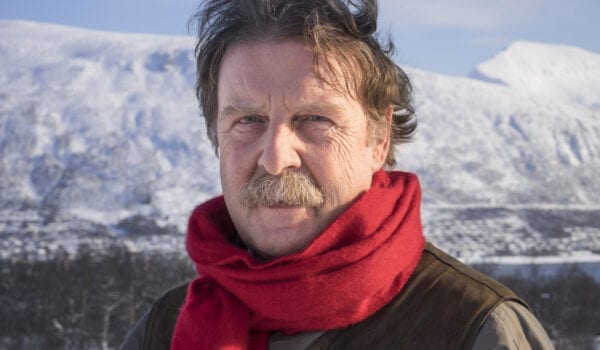The new permanent exhibition at The Arctic University Museum of Norway tells the story of our planet from a geological perspective, including pioneering research conducted at CAGE
From a scientific standpoint, the most reliable way to predict the future is by examining the past. Geological remnants help us to paint a picture of evolutionary processes that we are only beginning to understand, and many of these are on display as part of a new, permanent exhibition aimed at school-aged children at the Tromsø Museum called ‘TellUs – from stardust to modern technology.’ Evolution, in terms of ice sheet migration and its potential effect on climate change, is also a big theme at the Center for Arctic Gas Hydrate, Environment and Climate (CAGE) at UiT The Arctic University of Norway. The center is featured in the TellUs exhibition as part of the ‘modern technology’ portion of the story.
A journey through time
The TellUs exhibition leads the viewer on a journey that begins with the Earth as a ball of fire some 4,540 million years ago. This unimaginable expanse of time is brought into perspective by a 2.3-meter stack of A4 paper, using various colors to represent different periods of development in the Earth’s lifespan.

Other abstract concepts in geological history are made relatable by presenting them in a local context, while encouraging physical interaction with various touchscreens, rocks, fossils, minerals, and models. This is done especially well through several exhibits covering geological processes amongst the four most prominent mountain peaks of the Tromsø area: Store Blåmannen, Soltindan, Tromsdalstind, and Bentsjordtind.
CAGE research highlighted
Research performed at CAGE regarding Arctic gas hydrates becomes a major focus in the exhibit as we enter present day in the timeline. A gas hydrate is essentially methane ice, a solid form of a potent greenhouse gas. These crystalline structures are found in and under the seabed in the Arctic. They are stable in cold conditions and under high pressure, such as under the frigid Arctic ocean. Ice sheets in areas such as Greenland and west Antarctica help to keep the gas hydrates stable. But as these ice sheets begin to melt and recede at a much quicker rate, there is a growing concern that large quantities of methane gas could be destabilized and released abruptly.
Quantities of methane gas in the atmosphere have greatly escalated on a global scale in the recent past, with 70% of the increase credited to industrial and agricultural expansion. However, natural sources of methane – which is a greenhouse gas with 30x the power of CO2 – are still to be better understood.
Fortunately, scientists have discovered that an abrupt release of methane happened about 12000 years ago, as evidenced by giant craters found in the ocean floor offshore Svalbard and on land in the Siberian permafrost. By studying the evolution of ice sheet dynamics of the past as well as current conditions at gas hydrate and crater sites, scientists hope to understand how rapid climate change will effect these huge stores of methane.
A digital experience
There are several items to investigate at the CAGE part of the exhibition, most of them delivered visually. These include two explainer videos summarizing the risks and scale of the methane problem, a video featuring remotely operated vehicle (ROV) footage from a research expedition to the Barents Sea, and 10 additional videos of CAGE scientists explaining various elements of this important research. Also in place is an unusually well-preserved methane chimney carefully delivered to the museum from Italy.

The topics available on the screen are as follows:
CAGE: Gas hydrate Research (menu)
- Frozen gas within the sea floor
- The Arctic sub-sea rover to the bottom
- Scientists explain
- CAGE research (Jürgen Mienert )
- Gas hydrates from the ocean floor (Stefan Bünz)
- Ice sheets (Alun Hubbard)
- Tracking ice sheets (Monica Winsborrow)
- Methane and climate change (Bénédicte Ferré)
- Secrets in a shell (Giuliana Panieri)
- Organisms feed on methane (JoLynn Carrol)
- Methane blow-outs from the sea floor
- More scientific explanations
- Methane ice and climate (Joel Johnson)
- The chemistry of permafrost (Pavel Serov)
- Submarine landslides (Giacomo Osti)
Big plans for The Arctic University Museum of Norway
Throughout most of its history, The Arctic University Museum of Norway (formerly Tromsø Museum) has featured a geological exhibition, initially due to the influence of famous geologist and co-founder Karl Pettersen. The exhibition preceding TellUs was erected in the late 70s and faced renovations several times until 2014, when it was entirely dismantled to make room for the new exhibit.
In 2016, plans for a new building to house the museum were approved. The project is expected to be finished in 2025 and will include a 19,700 square meter museum in immediate proximity to Tromsø city center.


